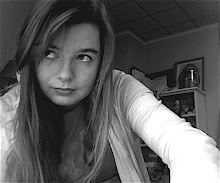By employing new methods within their poems, the members of the American Modernist movement awakened a new sense of wonder and curiosity within the readers of the nation. Through their unique forms and deviant use of language, the traditional styles of poetry were abandoned to establish a new form of expression. The structures of the past were no longer able to encompass the deep levels to which these artists intended to reach. Instead, newer, freer forms developed as ways to articulate the radical emotions of post-war America. Free verse poems dominated, their forms laced with juxtaposition, fragmentation, figurative language, and vivid images.
The poets that were part of the American Modernist movement served as representatives of a stage of rebellion against past conservatism. While their words expressed the changes of the human mind and explored deeper into the darkness than had ever been seen, their lifestyles also reflected the new angst that plagued the post-war nation. These men and women served as human beings that lived out the new state of mind, rather than just preaching it. They lived in the moment, often struggling with drugs, alcohol, promiscuity, and, for some, poverty. Poets of the era were the leaders that people chose to follow inasmuch as they took ideas away from their works, but, as citizens, their unconventional and chaotic lives were the stuff of gossip, not of glory.
The American Modernist movement revolutionized art and expression. Conservatism was a thing of the past. The new world order had brought about changes in the minds of humanity, and the poets of the era reveled in these opportunities to express their complex feelings through their works. In exploring the minds of human kind, a new darkness entered the scene. The world was no longer the place it had been; war had stripped away the innocence of earlier times. Raw emotions emerged. People no longer looked for the bandage that was the sweet poetry of the past. Americans were ready to explore, were inspired to do so. As America was preparing to open its mind to change, the American Modernist poets opened the doors and led Americans through so that they could finally begin to explore what it was to be human.
The greatest thing that a poet can strive for is to be an inspiration to others. The poets of the American Modernist movement led in a way that has inspired people since their words were first read. Poetry should awake emotions, bring to life visions and dreams, and it should in some way disturb the mind, shake it out of a fog so that one can truly see. The American Modernist poets worked as lenses to focus readers on new goals and help them to see things as they truly are. They were able to provoke a reaction that has served to change the world since their time. No longer is the world blind to itself. There is a full spectrum that has been brought to life under the guidance of the American Modernist poets.
VanSpanckeren, Kathryn. "Chapter 6 Modernism and Experimentation: 1914-1945." Outline of American Literature n. pag. Web. 2 Jun 2010. .

No comments:
Post a Comment